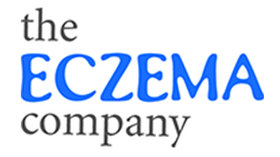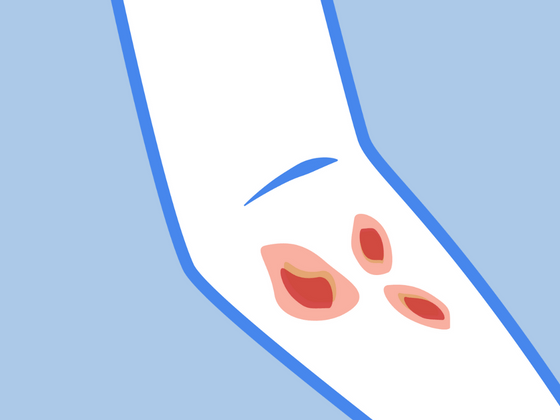Suffering from dry, itchy, red patches of skin? It could be that you have eczema. Now as uncomfortable as this skin condition is, before you start to worry, take a deep breath. This is a skin condition that affects 10-20% of the population. Chances are that members of your family, co-workers, and individuals in your circle of friends are also dealing with it. You are definitely not alone.
That being said, eczema can still be a scary and perhaps overwhelming condition to deal with. We get it and we want to help. That’s why we’ve put together an educational series titled Eczema 101-104. In these posts, we’ll explain what eczema is and describe some of the different varieties, discuss the symptoms and possible causes of the condition, and suggest some natural treatments that are worth a try.
If you are suffering from eczema, please bear in mind that we are in no way medical professionals. If you are experiencing severe symptoms or infections, speak to a medical professional as soon as possible.
What is Eczema?
Eczema, (often misspelled as ezema or exema) is an inflammatory skin condition where patches of skin become dry, rough, red, and extremely itchy. It commonly appears on the face, hands, feet, scalp, and back of the knees but can occur in other places as well. Studies have also proven that eczema is an autoimmune disease (1) similar to psoriasis, lupus and many other immune disorders.
People with eczema usually have an overactive immune system that responds with inflammation when triggered by a substance outside or inside the body. For example, a leaky skin barrier that allows staph, viruses, and allergens to enter the body can trigger eczema. Alternatively, the foods we eat, how we digest food, and things such as a leaky gut or a liver imbalance, can also exacerbate the condition.
Eczema Symptoms
Symptoms may vary depending on the age of the person and the type of eczema but in general, the following symptoms may occur:
- Dry, flaky skin
- Intense itchiness
- Red rashes that may burn
- Oozing skin
- White spots
These symptoms may change as you go through different healing stages.
Types of Eczema
Atopic Dermatitis
Also referred to as eczema, atopic eczema, or simply dermatitis, itchy skin is the primary characteristic of this condition. While it tends to be hereditary, it is not always passed down from parent to child as it may skip a generation. With this condition, the body’s immune system overreacts to things that would not usually do any harm, such as environmental factors like soaps, fragrances, and detergents. It is most commonly seen in children, creating dry and scaly patches on their scalp, forehead, cheeks and face. Thankfully, most atopic eczema in children will clear as they grow older.
Seborrheic Dermatitis
This type of eczema usually starts on the scalp as dandruff and progresses to redness, irritation, and increased scaling. With a more severe condition, skin becomes sore, flaky and even greasy, with the potential to extend to itchiness behind the ears, across the eyebrows, and around the nose and chest.
Contact Dermatitis
This is the name given to eczema that occurs because of contact with irritants or allergens in the environment. This includes irritants such as pets, animal dander, dust mites and pollen. It is the most common type of work-related disease, affecting the hands, arms, face and legs. The good news is that the condition should clear up and eventually not return once exposure to the irritant is terminated.
Nummular Dermatitis/Discoid Eczema
This is a distinct-looking type of eczema that causes skin to appear in ‘coin-shaped’ patches of eczema. Within a few days, the patches may ooze and become crusty or infected. As this type of eczema looks very similar to ringworm, it’s best to check with a medical professional to confirm whether it is, in fact, eczema.
Dyshidrotic Eczema
This type of eczema is characterized by small blisters filled with clear liquid. Ladies, we apologize in advance but for reasons unknown, dyshidrotic eczema is more prevalent in women than in men. Though it can appear in other locations, the prime spots for this type of eczema are on the hands or feet.
Hand Eczema
Hand eczema is so common that it has its own sub-type. Read this post for our best tips for coping with hand eczema.
We hope you found this information helpful. Stay tuned for our next post: Eczema 102: What Can Trigger Eczema. In the meantime, check out this video from Dr. Peter Lio on what causes eczema!
Do you suffer from one of the types of eczema listed above? Let us know in our Facebook group!
------------------

Bio: Laura is a contributor and content developer for The Eczema Company. She is in no way a medical professional. Her comments, suggestions, and reflections are not intended to replace any medical advice. Always seek the help of a medical professional before undertaking any diet or lifestyle changes.
References:
1. Dupilumab improves the molecular signature in skin of patients with moderate-to-severe atopic dermatitis. Jennifer D. Hamilton PhD. Journal of Allergy and Clinical Immunology, Volume 134, Issue 6, December 2014, Pages 1293-1300.








